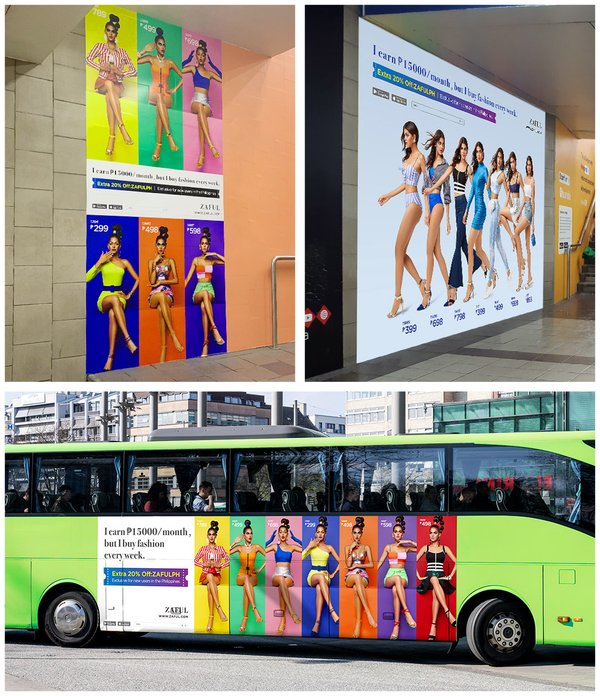Optimize Exposure with Transit Advertising Philippines
Optimize Exposure with Transit Advertising Philippines
Blog Article
Understanding the Role of Transportation Marketing in Enhancing Brand Visibility and Consumer Engagement
Transit advertising has actually emerged as a pivotal element in the advertising and marketing landscape, supplying one-of-a-kind chances for brands to boost their exposure and involve customers successfully. With the capacity to get to a captive and varied audience throughout their daily commutes, these advertising and marketing strategies are not merely about presence; they have to do with developing significant connections with potential customers. As we explore the complex advantages and innovative methods within transit advertising, it becomes vital to take into consideration how these components jointly influence customer understanding and habits, raising concerns regarding their long-lasting influence on brand name commitment.
Meaning of Transportation Advertising And Marketing
Transit advertising and marketing refers to the technique of promoting products, services, or brands through promotions put in and around public transport systems. This form of advertising and marketing incorporates a range of placements, consisting of posters on trains and buses, electronic displays at transit terminals, and wraps on the outside of vehicles. It intends to get to a varied target market, exploiting on the high foot website traffic associated with public transportation.
Transportation advertising and marketing is purposefully placed to catch the focus of commuters, that frequently spend substantial time traveling or waiting. By incorporating ads right into the day-to-day routines of individuals, brand names can create an enduring perception and foster brand name acknowledgment. The tool is particularly efficient in metropolitan settings, where public transport is a main setting of travel.
In addition, transportation advertising and marketing can promote local targeting, allowing organizations to reach particular demographics based on transportation courses and station places. As city populations grow and using public transport rises, this advertising approach has actually acquired importance as a crucial element of integrated advertising approaches. The vibrant nature of transit marketing, combined with its ability to engage consumers in a captive atmosphere, underscores its importance in contemporary advertising and marketing methods.
Benefits of Transit Advertising And Marketing
The efficiency of transportation marketing hinges on its capability to provide a plethora of advantages to brand names seeking to enhance visibility and involvement. Among the main advantages is the extensive reach it offers; transit advertisements can effectively target varied demographics across metropolitan areas, reaching both commuters and pedestrians alike. This broad exposure significantly boosts brand understanding.
Another advantage is the high regularity of impressions. As transit cars take a trip along established routes and quit at several areas, they develop recurring exposure that reinforces brand messages. This regularity fosters experience, which is essential in consumer decision-making.
Transportation marketing is additionally affordable contrasted to other media systems. Given its expansive reach and capacity for high impacts, brand names usually experience a lower expense per thousand perceptions (CPM), optimizing their advertising and marketing budget.
In addition, transportation advertisements can develop a feeling of area link. By aligning with neighborhood transportation systems, brand names can reverberate with local audiences and cultivate a feeling of neighborhood pride. This local technique improves brand commitment and involvement, making transportation advertising and marketing a compelling option for businesses aiming to solidify their presence on the market.

Effective Strategies for Transportation Campaigns
To make best use of the impact of transit campaigns, brands need to take advantage of calculated planning and implementation tailored to their target audience. Initially, identifying the market attributes of the audience using public transit is vital. This enables brands to create individualized messaging that resonates with potential clients.
Next, picking the best transportation mediums is essential. Whether utilizing bus covers, metro posters, or digital displays, each tool has unique benefits that can improve presence. For example, vibrant visuals on bus wraps can attract click here for more interest, while digital advertisements can be upgraded often to show prompt promos.
Additionally, integrating a natural branding strategy throughout transit platforms makes sure consistency and strengthens the brand's identification. Utilizing captivating styles and unforgettable taglines will certainly reinforce brand recall amongst travelers.
By utilizing these methods, brand names can efficiently harness the capacity of transportation marketing, fostering greater recognition and connection with their target audience. Inevitably, a well-executed transit project can drive significant development in brand name presence and consumer interaction.

Gauging Impact and Engagement
In examining the performance of transportation advertising projects, precise measurement of effect and involvement is essential for brand names looking for to maximize their advertising and marketing approaches. Metrics such as reach, frequency, and impacts offer fundamental data to evaluate presence. Analyzing these variables helps identify the amount of potential clients are revealed to the advertisements during their day-to-day commutes.
Interaction can be further determined through customer communications, such as web site web traffic, social networks discusses, and direct responses to calls-to-action featured in the ads. Making use of devices like QR codes or unique Links can facilitate tracking of customer habits directly connected to transit campaigns. Surveys and responses devices additionally act as valuable approaches to collect qualitative data on customer assumptions and recall of the ad.
Moreover, advanced analytics and attribution versions can correlate transportation direct exposure with subsequent acquiring habits, providing insights right into the roi. By utilizing a thorough method that integrates qualitative and measurable procedures, brands can create a nuanced understanding of their transit advertising influence. Eventually, this data-driven approach makes it possible for brands to refine their campaigns, ensuring they resonate properly with target audiences and boost general use this link brand presence.
Study of Effective Campaigns
Successful transit marketing campaign offer as engaging instances of how reliable techniques can elevate brand name exposure and interaction. Transit Advertising Philippines. One remarkable situation is the "I Love New York" campaign, which changed the city's picture and drew in millions of tourists. By utilizing metro advertisements, signboards, and bus covers, the campaign created a solid, cohesive brand identification, causing a considerable uptick in tourist and regional service patronage
Another exemplary project is Coca-Cola's "Share a Coke" effort, which leveraged transportation advertising to customize the brand name experience. By featuring prominent names on marketing products throughout numerous transportation systems, Coca-Cola fostered a much deeper emotional connection with consumers, urging them to share their experiences on social media.
Furthermore, the "Got More hints Milk?" campaign effectively used public transport advertisements to get to a wide target market, reinforcing the message of the value of milk in a well balanced diet. The campaign saw a quantifiable boost in milk intake in target demographics.
These instance studies illustrate that when implemented thoughtfully, transit advertising can substantially enhance brand name visibility, foster customer involvement, and drive quantifiable results, demonstrating its essential duty in contemporary advertising and marketing approaches. - Transit Advertising Philippines
Conclusion
To conclude, transit marketing functions as a crucial tool for enhancing brand presence and promoting consumer interaction. By using purposefully positioned promotions within mass transit systems, brand names can successfully get to diverse target markets and reinforce recognition via consistent direct exposure. The implementation of targeted messaging and cutting-edge techniques further enhances the effect of transit campaigns. Eventually, the ability to gauge interaction and examine effective case researches underscores the efficiency of transportation marketing in driving brand commitment and consumer communications.
Transportation advertising has arised as an essential component in the advertising and marketing landscape, providing distinct possibilities for brands to elevate their exposure and involve customers successfully.Additionally, transportation marketing can assist in localized targeting, enabling businesses to reach certain demographics based on transit paths and station places.In examining the efficiency of transportation advertising campaigns, accurate dimension of effect and interaction is important for brands looking for to enhance their advertising approaches.Effective transportation advertising campaigns offer as engaging instances of how effective methods can boost brand name visibility and engagement.In final thought, transit advertising offers as a crucial device for boosting brand name presence and promoting consumer interaction.
Report this page